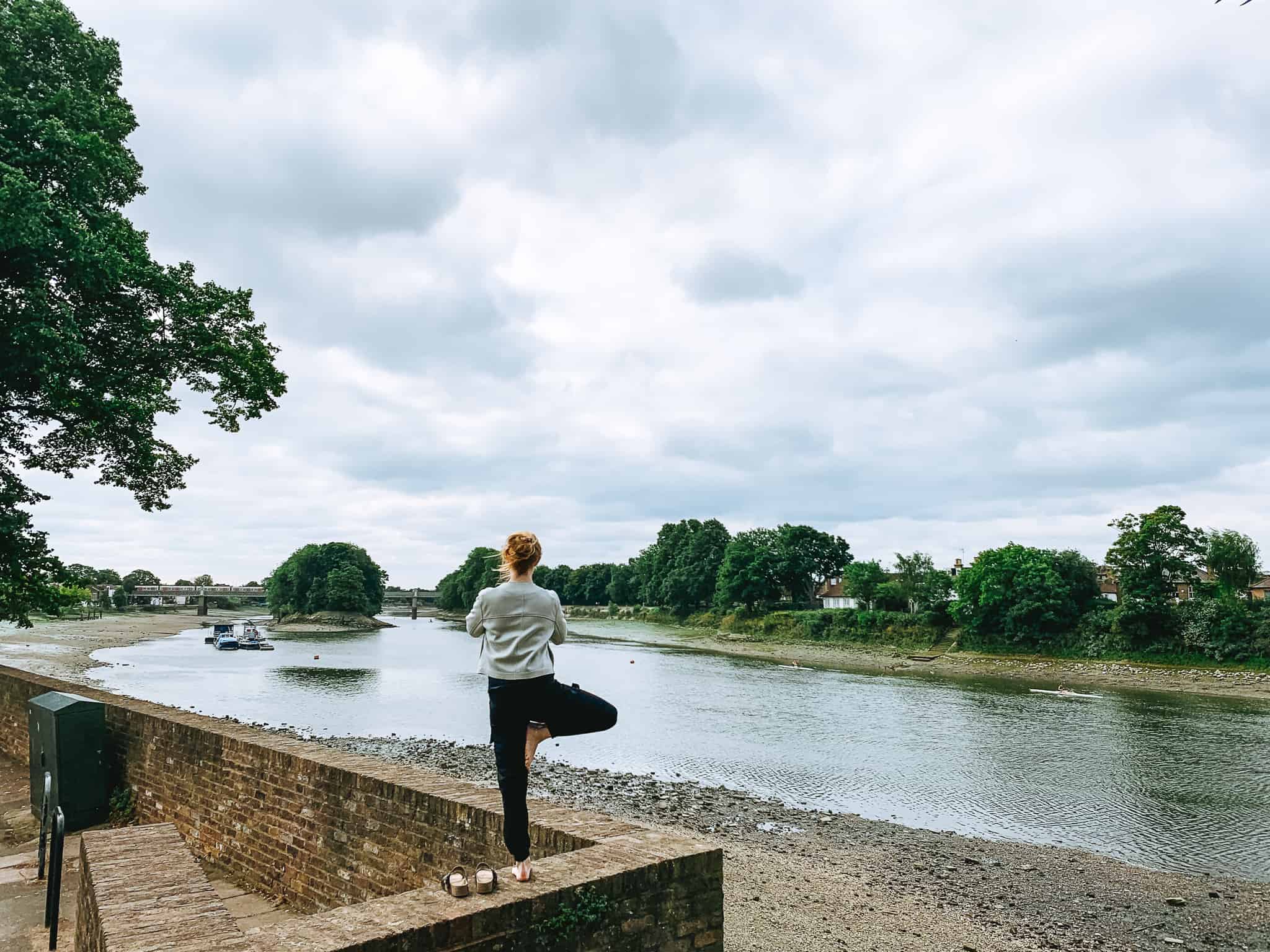Does your posture matter? (Clue: Yes!)
In short, posture is important! Your posture can impact the efficiency of your bodily systems, your mobility, and even your mood.
But the internet can be a confusing place sometimes. No matter what the topic, you can see experts debate it left right and centre. You can end up pulled around in between with no idea which way is up or down.
And discussion around posture is no exception.
It’s a topic that has been hotly debated and ultimately, I think it’s really easy to take an idea out of context and make 1+1=27.
So let’s start at the beginning…
What is good posture?
I want to start by busting some myths or preconceived ideas you might have about what good posture is.
Here’s what does not matter when it comes to posture:
- Standing up tall all the time
- Head up, chest forward, shoulders back
- Holding your ‘perfect posture’ all day
Often when I talk about posture, the first thing people do is sit up straight and pull their shoulders back.
Maybe that’s what you heard in school or as a child?
In fact, good posture is about bringing your body – and your joints – into better alignment.
When the joints are well aligned, they can more efficiently distribute the forces that are put upon it.
This could be the force of gravity or an external load such as lifting a weight.
Is there a 'perfect' posture for everyone?
Apart from being mentally and physically exhausting, most of us don’t have the proprioception (which is the awareness of our body’s position in space) to be able to hold a ‘perfect’ posture all day anyway!
Instead, think about what is more or less optimal for you, in your body.
We need to think about both our standing posture and our posture in movement throughout the day.
Your standing posture is where your body defaults to when you aren’t consciously thinking about your posture.
If you spend long days sitting at a desk working on a computer, for instance, you might find that your body naturally has developed a forward head position and your shoulders round forward when you are not sat at your desk.
(But of course, this is not the case for everyone who works at a desk!)
Remember that your body is incredibly intelligent! When you put your body in a certain position for a long period of time, it will adapt to get better at holding that position.
This means that…
“Your best posture is your next posture”
– Unknown source
Your body does not expect to spend long periods in a still and stagnant position.
By moving regularly and in a variety of ways, you reduce the likelihood of putting strain on a single area of the body (like muscles or connective tissues).
Many joints benefit from regular movement too – for instance, movement helps to replenish the synovial fluid in the ball and socket joints like the hips, and so it helps you to keep your hips mobile.
Will improving my posture reduce my aches and pains?
Yes, No and Maybe? This one is not a simple question to answer. The only correct answer here is ‘it depends’.
First, it’s important to remember that pain can come in a variety of forms and have a variety of causes.
There is a difference between lower back pain and digestive discomfort.
Even taking just lower back pain, the cause could be a pulled muscle, a slipped disc, or more serious underlying medical condition.
This means that one person who experiences lower back pain may look like they have great posture. Meanwhile another person who looks like they have terrible posture may experience no lower back pain at all.
And when we look at the research, it suggests that when it comes to lower back pain specifically, there is not a direct correlation between posture and back pain.
“People adopt a range of different spine postures, and no single posture protects a person from back pain. People with both slumped and upright postures can experience back pain.”
However, there is evidence to suggest that there are 2 risk factors for an episode of acute back pain – meaning, a sudden onset of sharp pain in the lower back:
- Being distracted
- A temporary awkward posture
Imagine you are crawling around under your kitchen sink and trying to reach for a leaky pipe.
- You are temporarily putting your body in an unusual position (a temporary awkward posture),
- Your mind might be thinking about how to fix the pipe – in other words, you are distracted, and not thinking about how you are best supporting your body to avoid injury.
Since a temporary awkward posture can result in the onset of back pain, we can infer that by training the body to manage instability, we can increase the likelihood that our body can better handle postural stress when put in a temporary awkward posture.
There are two ways we can do this.
First, we can train the body to improve strength in a neutral position. This way, we are training in a way that supports optimal muscle firing, instead of creating new compensatory patterns.
Second, we can incorporate instability into our practice. We do this in yoga by putting demand on the body in an asymmetric way, such as practicing standing single-leg balances, as well as practicing movement in all planes of motion.
As you build better coordination, balance and strength, your body adapts to being able to better manage temporary awkward postural positions when they arise – that way, even if you are distracted, your muscle memory kicks into gear.
What are the benefits to improving my posture?
1. Efficiency improvements for your bodily systems
When you improve your posture, you make it easier for your bodily systems to operate efficiently. In particular: breathing and digestion.
When your ribs are well stacked over your pelvis, your lungs are better able to expand and contract to breathe freely. Likewise, your digestive organs like your intestines have more space to function and are less likely to be restricted.
2. Improved mobility
When your joints well aligned, there is a bigger surface area between the joint, and the joint is better to redistribute force through the body.
(Remember that our bodies are always redistributing force, whether it is due to gravity or an external load like a weight).
Plus, when the joints are well aligned, the muscles are less likely to have compensatory patterns. This is where one muscle is under increased load than usual due to the positioning of the joint, putting it under strain.
“A 2012 study of knee arthritis — an ideal place to look — showed that people who already have arthritic knees are bigger leaners, and their gait is “consistently different” than people with healthy knees, and they probably weren’t walking differently because of pain. That is, the crookedness probably caused the arthritic pain, as opposed to arthritis just making them walk crookedly.”
So when our joints are well aligned, they are less likely to wear down and cause arthritis, less likely to create strain on the muscles and surrounding tissues, and more likely to be able to move to a bigger range of motion.
3. Confidence, self-esteem, and mental state
The English language is full of idioms relating to how our body position impacts our emotional state:
Hold your head high
Stand tall
Keep your chin up
Have a weight on your shoulders
Now, I recognise that the English language is not scientific evidence to support the idea that posture and our emotions are connected!
But, it does immediately indicate that sometimes we have knowledge that we intuitively know.
And of course, there is evidence to suggest our posture impacts our mood.
One of the most watched Ted Talks is on power posing by Amy Cuddy. In her research, she found that “adopting expansive postures causes people to feel more powerful.”
Since her talk, other studies have taken place that tried to replicate her findings with mixed results, but whilst it is unclear the degree of impact that a power pose has on emotions, Amy has more recently concluded that:
“What’s absolutely clear from the studies is that adopting expansive poses increases people’s feelings of power and confidence.”
Plus, if you have an open mind to non-scientific literature, in the chakra system, the area around our abdominals is the central of our will, our inner strength and power. When our posture is well aligned, our abdominals are better able to strengthen and support our core. So an improved posture can also help us to energetically feel more connected to our inner strength and power.
How do I improve my posture?
This could be an entire blog post, but I’ll give you a few places to start:
- Take photos of yourself from front, back and side. Walk around the room a little first so you are standing naturally. Sometimes just looking at yourself in a photo is enough to notice your posture. For instance, a forward head position can be really obvious in a picture, but you don’t notice it in daily life. (And, if you are unsure, send me your photo on Instagram! I’ll be happy to give you feedback)
- Remember “Triple S: Skull, Scapula, Sacrum.” This idea was created by LYT Yoga founder Lara Heimann and is practiced in our yoga practice. It is a useful way to consider if your body is well aligned. Try lying down on the floor and checking to see if those 3 areas are flush to the floor.
- Keep moving throughout the day – Remember that ‘your best posture is your next posture’, and that your body will adapt to what you throw at it. Stillness generates stagnancy, and the more you regularly move throughout the day, the better your body will be at adapting to different postures.
And of course, practice yoga!
My teachings are based on LYT Method yoga, which is based on a foundation of improving your posture each time your practice.
Remember that it is important that we do not hold fear of moving into any range of motion.
Instead, we want to train our bodies in a neutral posture to build strength and balance in an optimal way, and then the next time our bodies are put in a temporary awkward position like reaching for a pipe under the sink, the muscles and joints are primed and ready to support the body without injury.
But, what if I still have questions?
Navigating these topics can be tricky, and I wanted to end this post by pointing you toward one of the Yoga Sutras.
The Yoga Sutras of Patanjali are the philosophical texts that underpin the practice of yoga. Patanjali explains how to determine what is right knowledge, and says that:
“Right knowledge consists of sense perception, logic or verbal testimony”
(Sutra 1.7)
In the Sutras, the first in a list is the most important, which in this case is sense perception. This is your direct experience, through your own eyes and ears.
So, I suggest you start to implement yoga into your routine, work on improving your posture and then see how you feel.
In my case, the more I practiced, the better my posture, and the better I felt in my body.
Plus, if you are improving your mobility, strength, balance, and fitness levels, and helping to reduce your stress anyway, what do you have to lose?!




